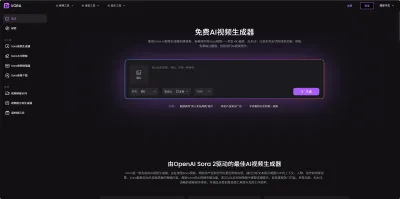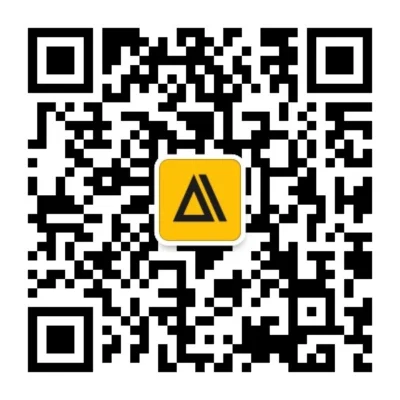Surface Defect Detection: Dataset & Papers <sup>📌</sup>
<a href="https://github.com/Charmve"><img src="https://img.shields.io/badge/GitHub-@Charmve-000000.svg?logo=GitHub" alt="GitHub" target="_blank"></a>
<a href="https://charmve.github.io/computer-vision-in-action/" target="_blank"><img src="https://img.shields.io/badge/计算机视觉实战-简体中文-000000.svg?logo=GitBook" alt="Computer Vision in Action"></a>


Introduction
<p>At present, surface defect equipment based on machine vision has widely replaced artificial visual inspection in various industrial fields, including 3C, automobiles, home appliances, machinery manufacturing, semiconductors and electronics, chemical, pharmaceutical, aerospace, light industry and other industries. Traditional surface defect detection methods based on machine vision often use conventional image processing algorithms or artificially designed features plus classifiers. Generally speaking, imaging schemes are usually designed by using the different properties of the inspected surface or defects. A reasonable imaging scheme helps to obtain images with uniform illumination and clearly reflect the surface defects of the object. In recent years, many defect detection methods based on deep learning have also been widely used in various industrial scenarios.</p> <p>Compared with the clear classification, detection and segmentation tasks in computer vision, the requirements for defect detection are very general. In fact, its requirements can be divided into three different levels: "what is the defect" (<strong>classification</strong>), "where is the defect" (<strong>positioning</strong>) and "How many defects are" (<strong>split</strong>).</p> <div align="center">*** 本项目会持续更新,右上角收藏防丢失 Star :star: ~ ***
<b>Star anti-lost</b>
<i>喜欢这个项目吗?请考虑 :heart: 赞助本项目 以帮助长期维护!</i>
</div>Table of Contents
- Introduction
- Key Issues
- Common Datasets
- Steel Surface: NEU-CLS
- Kaggle - Severstal: Steel Defect Detection
- Solar Panels: elpv-dataset
- Metal Surface: KolektorSDD
- PCB Inspection: DeepPCB
- Fabric Defects Dataset: AITEX
- Fabric Defect Dataset (Tianchi)
- Aluminium Profile Surface Defect Dataset(Tianchi)
- Weakly Supervised Learning for Industrial Optical Inspection(DAGM 2007)
- Cracks on the Surface of Construction
- Magnetic Tile Dataset
- RSDDs: Rail Surface Defect Datasets
- Kylberg Texture Dataset v.1.0
- Repeat the Background Texture Dataset: KTH-TIPS
- Escalator Step Defect Dataset
- Transmission Line Insulator Dataset
- MVTEC ITODD
- BSData
- GID: The Gear Inspection Dataset
- AeBAD aircraft engine blade anomaly detection
- BeanTech Anomaly Detection(BTAD)
- More Inventory
- Papers
- Acknowledgements
- Download
- Notification
- Community
1. Key Issues in Surface Defect Detection
1)Small Sample Problem
<p>The current deep learning methods are widely used in various computer vision tasks, and surface defect detection is generally regarded as its specific application in the industrial field. In traditional understanding, the reason why deep learning methods cannot be directly applied to surface defect detection is because in a real industrial environment, there are too few industrial defect samples that can be provided.</p> <p>Compared with the more than 14 million sample data in the ImageNet dataset, the most critical problem faced in surface defect detection is <b>small sample problem</b>. In many real industrial scenarios, there are even only a few or dozens of defective images. In fact, for the small sample problem which is one of the key problems in industrial surface defect detection, there are currently 4 different solutions:</p><b>- Data Amplification and Generation</b>
<p> The most commonly used defect image expansion method is to use multiple image processing operations such as mirroring, rotation, translation, distortion, filtering, and contrast adjustment on the original defect samples to obtain more samples. Another more common method is data synthesis, where individual defects are often fused and superimposed on normal (non-defective) samples to form defective samples.</p><b>- Network Pre-training and Transfer Learning</b>
<p>Generally speaking, using small samples to train deep learning networks can easily lead to <strong>overfitting</strong>, so methods based on pre-training networks or transfer learning are currently one of the most commonly used methods for samples.</p><b>- Reasonable Network Structure Design</b>
<p>The need for samples can also be greatly reduced by designing a reasonable network structure. Based on the compressed sampling theorem to compress and expand small sample data, we use CNN to directly classify the compressed sampling data features. Compared with the original image input, compressing the input can greatly reduce the network's demand for samples. In addition, the surface defect detection method based on the twin network can also be regarded as a special network design, which can greatly reduce the sample requirement.</p><b>- Unsupervised or Semi-supervised Method</b>
In the unsupervised model, only normal samples are used for training, so there is no need for defective samples. The semi-supervised method can use unlabeled samples to solve the network training problem in the case of small samples.
👆 <b>BACK to Table of Contents</b> -->
2)Real-time Problem
<p>The defect detection methods based on deep learning include three main links in industrial applications: <b>data annotation</b>, <b>model training</b>, and <b>model inference</b>. Real-time in actual industrial applications pays more attention to model inference. At present, most defect detection methods are concentrated in the accuracy of classification or recognition, little attention is paid to the efficiency of model inference. There are many methods for accelerating the model, such as model weighting and model pruning. In addition, although the existing deep learning model uses GPU as a general-purpose computing unit(GPGPU), with the development of technology, it is believed that FPGA will become an attractive alternative.</p>👆 <b>BACK to Table of Contents</b> -->
2. Common Datasets for Industrial Surface Defect Detection
1)Steel Surface: NEU-CLS
NEU-CLS can be used for classification and positioning tasks.
- :x: Official Link:http://faculty.neu.edu.cn/yunhyan/NEU_surface_defect_database.html
<b> latest access 🔗 - (#16) </b>
<div align=center><img src="https://img-blog.csdnimg.cn/20200927223042720.png"></div> <p>The surface defect dataset released by Northeastern University (NEU) collects six typical surface defects of hot-rolled steel strips, namely rolling scale (RS), plaque (Pa), cracking (Cr), pitting surface (PS), inclusions (In) and scratches (Sc). The dataset includes 1,800 grayscale images, six different types of typical surface defects each of which contains 300 samples. For defect detection tasks, the dataset provides annotations that indicate the category and location of the defect in each image. For each defect, the yellow box is the border indicating its location, and the green label is the category score.</p> <div align=center><img src="https://user-images.githubusercontent.com/29084184/114502526-82306280-9c5e-11eb-9d60-011ee100e179.png"></div>Kaggle - Severstal: Steel Defect Detection
<img align="right" alt="Severstal: Steel Defect Detection" src="https://user-images.githubusercontent.com/29084184/119592872-ddcc3f00-be0b-11eb-9d2e-6b1bc9216c89.png" width="150" title="Severstal: Steel Defect Detection">Severstal is leading the charge in efficient steel mining and production. They believe the future of metallurgy requires development across the economic, ecological, and social aspects of the industry—and they take corporate responsibility seriously. The company recently created the country’s largest industrial data lake, with petabytes of data that were previously discarded. Severstal is now looking to machine learning to improve automation, increase efficiency, and maintain high quality in their production.
https://www.kaggle.com/c/severstal-steel-defect-detection
<br>👆 <b>BACK to Table of Contents</b> -->
2)Solar Panels: elpv-dataset
<p>A dataset of functional and defective solar cells extracted from EL images of solar modules.</p> <div align=center><img src="https://img-blog.csdnimg.cn/20200927192329402.png"></div> <br>The dataset contains 2,624 samples of 300x300 pixels 8-bit grayscale images of functional and defective solar cells with varying degree of degradations extracted from 44 different solar modules. The defects in the annotated images are either of intrinsic or extrinsic type and are known to reduce the power efficiency of solar modules.
All images are normalized with respect to size and perspective. Additionally, any distortion induced by the camera lens used to capture the EL images was eliminated prior to solar cell extraction.
<br>👆 <b>BACK to Table of Contents</b> -->
3)Metal Surface: KolektorSDD
The dataset is constructed from images of defected electrical commutators that were provided and annotated by Kolektor Group. Specifically, microscopic fractions or cracks were observed on the surface of the plastic embedding in electrical commutators. The surface area of each commutator was captured in eight non-overlapping images. The images were captured in a controlled environment.
<div align=center><img src="metal_surface.png"></div> <br>-
Official Link:https://www.vicos.si/Downloads/KolektorSDD
-
Download Link:https://pan.baidu.com/share/init?surl=HSzHC1ltHvt1hSJh_IY4Jg (password:
1zlb) -
Implementation: https://github.com/skokec/segdec-net-jim2019
The dataset consists of:
- 50 physical items (defected electrical commutators)
- 8 surfaces per item
- Altogether 399 images:<br> -- 52 images of visible defect<br> -- 347 images without any defect
- Original images of sizes:<br> -- width: 500 px<br> -- height: from 1240 to 1270 px
- For training and evaluation images should be resized to 512 x 1408 px
For each item the defect is only visible in at least one image, while two items have defects on two images, which means there were 52 images where the defects are visible. The remaining 347 images serve as negative examples with non-defective surfaces.
<br>👆 <b>BACK to Table of Contents</b> -->
4)PCB Inspection: DeepPCB
<div align=center><img src="https://github.com/tangsanli5201/DeepPCB/blob/master/fig/test.jpg" width="375" style="margin:20"> <img src="https://github.com/tangsanli5201/DeepPCB/blob/master/fig/template.jpg" width="375" style="margin:20"> </div> <div align=center> an example of the tested image the corresponding template image </div> <p align=center>Figure 1. PCB Inspection Dataset.</p> <br>👆 <b>BACK to Table of Contents</b> -->
5)Fabric Defects Dataset: AITEX
- 🔗 Download Link:https://pan.baidu.com/s/1cfC4Ll5QlnwN5RTuSZ6b7w (password:
b9uy)
This dataset consists of 245 4096x256 pixel images with seven different fabric structures. There are 140 non-defect images in the dataset, 20 of each type of fabric. In addition, there are 105 images of different types of fabric defects (12 types) common in the textile industry. The image size allows users to use different window sizes, thereby the number of samples can be increased. The online dataset also contains segmentation masks of all defective images, so that white pixels represent defective areas and the remaining pixels are black.
<div align=center><img src="https://user-images.githubusercontent.com/29084184/114502747-d9363780-9c5e-11eb-9602-2b1b6de4e8d3.png"></div> <br>👆 <b>BACK to Table of Contents</b> -->
6)Fabric Defect Dataset (Tianchi)
- 🔗 Download Link:https://pan.baidu.com/s/1LMbujxvr5iB3SwjFGYHspA
编辑推荐精选


Vora
免费创建高清无水印Sora视频
Vora是一个免费创建高清无水印Sora视频的AI工具


Refly.AI
最适合小白的AI自�动化工作流平台
无需编码,轻松生成可复用、可变现的AI自动化工作流


酷表ChatExcel
大模型驱动的Excel数据处理工具
基于大模型交互的表格处理系统,允许用户通过对话方式完成数据整理和可视化分析。系统采用机器学习算法解析用户指令,自动执行排序、公式计算和数据透视等操作,支持多种文件格式导入导出。数据处理响应速度保持在0.8秒以内,支持超过100万行数据的即时分析。


TRAE编程
AI辅助编程,代码自动修复
Trae是一种自适应的集成开发环境(IDE),通过自动化和多元协作改变开发流程。利用Trae,团队能够更快速、精确地编写和部署代码,从而提高编程效率和项目交付速度。Trae具备上下文感知和代码自动完成功能,是提升开发效率的理想工具。


AIWritePaper论文写作
AI论文写作指导平台
AIWritePaper论文写作是一站式AI论文写作辅助工具,简化了选题、文献检索至论文撰写的整个过程。通过简单设定,平台可快速生成高质量论文大纲和全文,配合图表、参考文献等一应俱全,同时提供开题报告和答辩PPT等增值服务,保障数据安全,有效提升写作效率��和论文质量。


博思AIPPT
AI一键生成PPT,就用博思AIPPT!
博思AIPPT,新一代的AI生成PPT平台,支持智能生成PPT、AI美化PPT、文本&链接生成PPT、导入Word/PDF/Markdown文档生成PPT等,内置海量精美PPT模板,涵盖商务、教育、科技等不同风格,同时针对每个页面提供多种版式,一键自适应切换,完美适配各种办公场景。


潮际好麦
AI赋能电商视觉革命,一站式智能商拍平台
潮际好麦深耕服装行业,是国内AI试衣效果最好的软件。使用先进AIGC能力为电商卖家批量提供优质的、低成本的商拍图。合作品牌有Shein、Lazada、安踏、百丽等65个国内外头部品牌,以及国内10万+淘宝、天猫、京东等主流平台的品牌商家,为卖家节省将近85%的出图成本,提升约3倍出图效率,让品牌能够快速上架。


iTerms
企业专属的AI法律顾问
iTerms是法大大集团旗下法律子品牌,基于最先进的大语言模型(LLM)、专业的法律知识库和强大的智能体架构,帮助企业扫清合规障碍,筑牢风控防线,成为您企业专属的AI法律顾问。


SimilarWeb流量提升
稳定高效的流量提升解决方案,助力品牌曝光
稳定高效的流量提升解决方案,助力品牌曝光


Sora2视频免费生成
最新版Sora2模型免费使用,一键生成无水印视频
最新版Sora2模型免费使用,一键生成无水印视频
推荐工具精选
AI云服务特惠
懂AI专属折扣关注微信公众号
最新AI工具、AI资讯
独家AI资源、AI项目落地

微信扫一扫关注公众号





